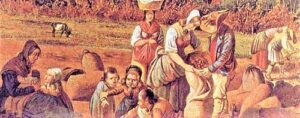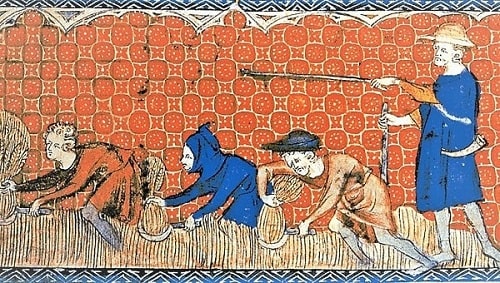Serfdom – is a system of slavery-related to the status of farmers under the feudal system, especially in Manorialism. Serfdom major developments in Europe in the 10th century the mid-Middle Ages and continued until the mid-19th century, the financial bondage or variation of slavery practice of slavery as a condition for farmers.
Serfs used their own labor to work on state-owned or manor-owned land in exchange for protection and justice, as well as additional cultivation on the land to ensure their livelihood. Serfdom not only involved farming, but also mining, forestry, and road construction.
Under the serf system, the Manorialism formed the basic unit of society, and the serf formed the lowest social class in feudal society. Serfs were bound by multiple constraints in legal, economic, and social relations. Serfs are different from slaves. The lords of serfs only have incomplete personal possession.
The lord could not execute the serf, but he could punish (tattoo) at will or buy, sell, mortgage, and transfer the land. Serfs are obliged to work for the lord for free, and the output of the serfs is also defined as the lord’s property rights (so the escape of the serfs is equivalent to the theft of the lord’s property).
The serfdom regulations abolished in Russia in 1861, the lord’s industry is often measured by the number of serfs. However, the serfs were trapped on the manor land without the approval of the lord or leaving. If serfs flee, they will be punished by the state system, and the lord will also capture them.
Origins of Serfdom
At the end of the Roman Empire, the status of settler changed. Now, settlers are legally bound to the land they farm or to the owner of the land, in a form that prefigures serfdom. The social unrest and the invasions which accompanied the decline of the empire push the big owners to withdraw in their fields, of which they organize themselves the defense.
Fleeing slaves and peasant families come to find refuge on these estates. The owner allocates to each family a lot of lands that they can cultivate on their own account, in exchange for a share of the harvest and labor time on the land of the owner.
The children of peasants in turn inherit the status of dependency from their parents. Gradually this system evolves towards serfdom.
Serfdom in Russia

The origins of serfdom in Russia date back to the Kievan Rus in the 11th century. The legal documents of the time, like the Russkaya Pravda

